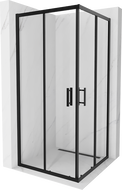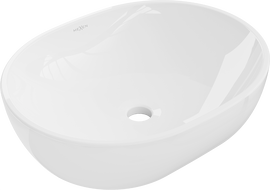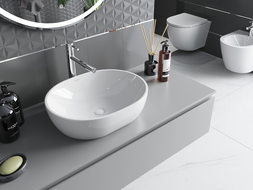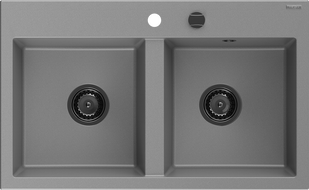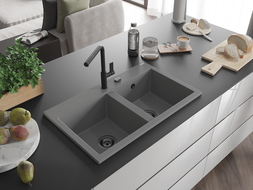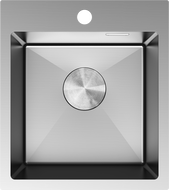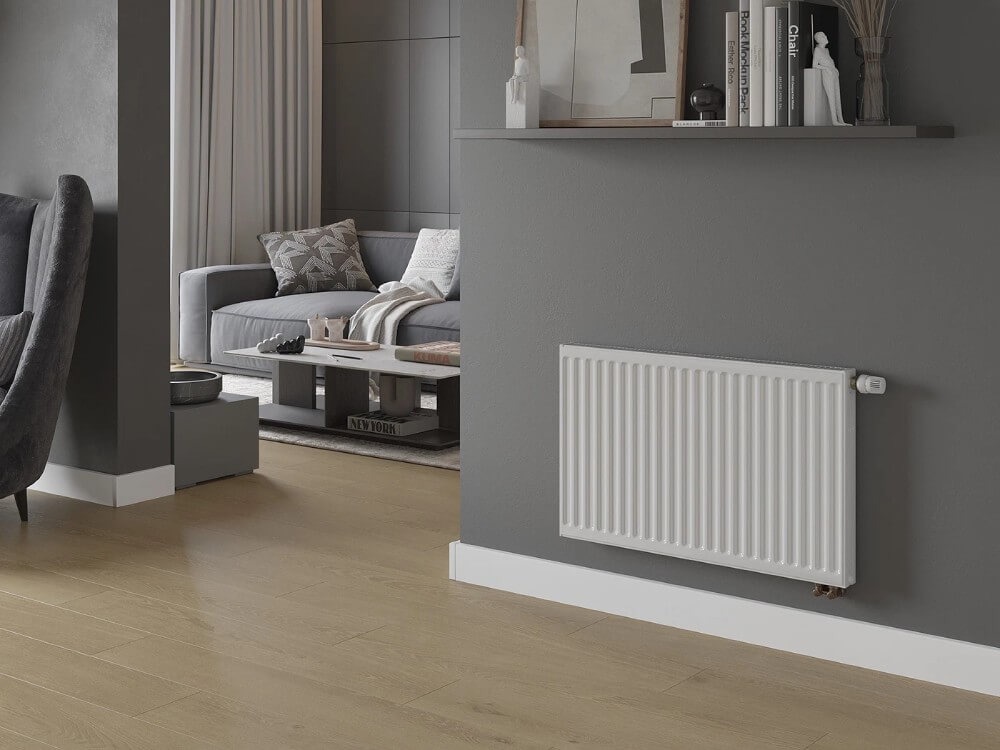
Choosing a heating system for your home is one of the most important decisions to make even at the design stage. The types of home heating vary in terms of cost, efficiency, and environmental impact. Therefore, it is worth familiarising yourself with the available options before making a final decision. Whether you are considering gas heating, electric heating, a heat pump, or solid fuel-based systems, each of these systems has its advantages and disadvantages. Read on to learn what distinguishes the most popular ways to heat a home. Choose the most suitable solution for yourself and your family!
What will you learn from this article?
In the guide below, you will find answers to the most important questions about different heating systems:
- What are the most popular types of home heating?
- What are the advantages and disadvantages of gas, electric heating, and heat pumps?
- What factors should be considered when choosing a heating system?
Types of home heating – what do you need to know?
There are many different ways to heat a home, especially in the autumn. The choice is vast, and finding the right solution depends on many factors. Therefore, get to know now the most well-known methods of heating rooms and make a decision on which one to use in your home environment.
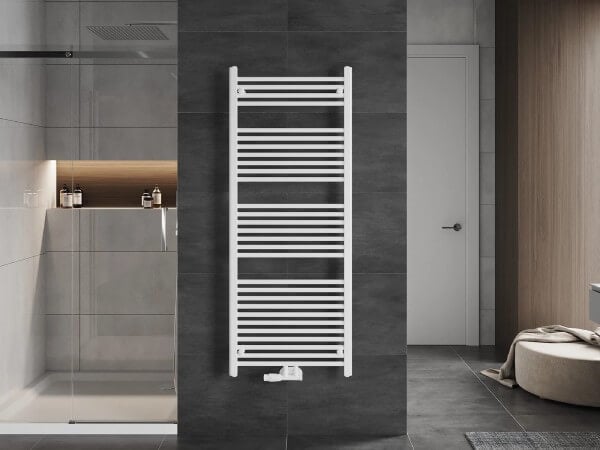
Gas heating system – is it the cheapest heating?
The use of natural gas to heat homes is one of the most common solutions in urban areas where the gas infrastructure is well-developed. Heat is generated in a gas boiler and then distributed throughout the house using traditional radiators or modern underfloor heating systems. Thanks to its efficiency and relatively low operating costs, it is an attractive option for many single-family homeowners.
Heating a home with natural gas – advantages:
- Relatively low maintenance costs.
- Modern condensing boilers are highly efficient, making maximum use of fuel.
- Comfortable use – gas heating is practically maintenance-free.
Disadvantages of gas heating:
- Need for access to the gas network or installation of a liquefied gas tank.
- High installation cost, especially when building new gas installations.
Electric boilers – one of the ways to heat a home
Electric heating is increasingly used in modern and energy-efficient homes year by year. It uses electric energy to power heating systems such as radiators, storage heaters, or underfloor heating. There is no need to build chimney ducts and the simple installation means that by 2023, about 15-20% of new homes will be equipped with this system. It is worth remembering that while it is safe and easy to use, it requires a thoughtful approach to operating costs, which may increase, particularly in the winter season.
Advantages of electric heating:
- Easy installation, no need to build a chimney.
- Possibility of precise temperature regulation in each room.
- Safety and no emission of harmful substances.
Disadvantages of electric heating:
- High operational costs, especially during the heating season.
- In some cases, there is a need to modernise the electrical installation.
Heating a home with a heat pump
Using environmental energy for home heating is now possible thanks to modern solutions such as heat pumps. This system draws heat from natural sources such as air, ground, or water, resulting in high energy efficiency and significant ecological benefits. Thanks to low CO2 emissions and the possibility of integration with renewable energy sources, these modern pumps are gaining recognition among those seeking environmentally friendly solutions. This system is particularly attractive where access to other heat sources is limited, and homeowners focus on long-term savings.
Heating a single-family home with a heat pump – advantages:
- Lower operating costs, especially when combined with photovoltaic panels.
- Ecological approach that reduces CO2 emissions.
- The heat pump provides both home heating and cooling in the summer.
Disadvantages of heat pumps:
- High investment costs associated with equipment purchase and installation.
- Requires suitable geological conditions or availability of space outside.
Solid fuel heating – coal stoves and more
Traditional heating methods based on solid fuel are still popular in many areas of Poland, especially in rural areas or where access to the gas network is limited. Solid fuels such as coal, wood, or pellets provide high thermal efficiency and are often chosen by homeowners due to easy availability and lower fuel costs. Although this method of heating requires regular maintenance, including fuel replenishment and boiler cleaning, it remains an attractive option for many, especially those seeking renewable energy solutions.
Advantages of solid fuel heating:
- Low fuel costs, especially in the case of wood or coal.
- Possibility of using energy from renewable sources.
Disadvantages of solid fuel heating:
- Requires regular fuel replenishment and periodic stove cleaning.
- High emission of pollutants, especially when heating with coal.
Oil heating – what you should know about it?
Oil heating is a popular choice where there is no access to the gas network. This heating system is based on the combustion of heating oil, which is stored in special tanks on the property. Heating a single-family home this way offers independence from the gas network, but it involves the need for proper fuel stock management and higher operating costs compared to other options.
Advantages of oil heating:
- No dependence on access to the gas network.
- Possibility of long-term fuel storage.
Disadvantages of oil heating:
- High costs of heating oil and its storage.
- Higher emission of harmful substances compared to gas.
Heat distribution and thermal comfort – what does it mean?
Even heat distribution in the home affects both thermal comfort and the efficiency of the entire heating system. Underfloor heating is practical due to the distribution of high temperatures across the entire floor surface. It works on the principle of radiant heat, so it is felt evenly in every part of the room. This way of heating not only improves comfort on cold days but also prevents sudden temperature changes in the home.
On the other hand, with traditional radiators, heat tends to accumulate mainly around the device. Unfortunately, this can lead to temperature differences in different parts of the room. Radiators heat the air, which then circulates inside and is less effective in evenly distributing heat. To improve efficiency, it is worth choosing the right radiator power for the size of the rooms.
It is also worth considering systems with intelligent control, such as thermostats, that allow you to set the temperature individually for each room in the house. This solution allows better adaptation of heating to the lifestyle of the residents. Undoubtedly, this improves energy efficiency and also brings significant financial savings by limiting heating in rooms that are rarely used.
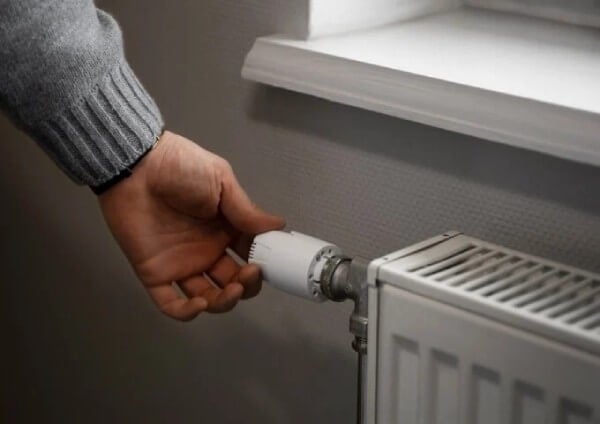
Home heating costs – what you need to know?
Home heating costs are one of the most significant factors to consider when choosing the right heating system for us. The decision on how to heat the house impacts not only the budget during installation but also during daily use. For example, a heat pump, especially one combined with renewable energy sources such as photovoltaic panels, offers the lowest operating costs. Although initial installation costs may be high, the benefits of low energy bills are felt within a few years. On the other hand, electric heating – although simpler to install – is one of the most expensive to use, especially in colder months when energy consumption significantly increases.
Gas boilers, even though they require a connection to the gas network or installation of a tank for liquefied gas, in many cases are more advantageous in terms of operation. Modern condensing boilers offer high energy efficiency and lower charges. Therefore, it can be safely said that the annual cost of heating a house depends not only on the type of system but also on the climatic conditions, the building's area, and energy management practices. It is also worth remembering to regularly maintain heating systems, as this can prevent unnecessary energy loss and further expenses.
How to reduce home heating costs?
Besides choosing the right heating system, there are many ways to reduce home heating costs, such as even heating of rooms. Proper energy management, building insulation, and investments in technologies that support the efficiency of installed systems can bring significant savings. Here are a few proven methods for optimizing heating costs:
Proper home insulation also matters!
One of the most important factors affecting heating costs is proper building insulation. Even the most efficient heating system will lose its advantages if the house is poorly insulated. Therefore, it is worth investing in proper insulating materials that will reduce heat loss through walls, roofs, and windows. A well-insulated house requires less thermal energy, which directly translates into lower bills.
Thermostats and intelligent management systems will help you heat your home
Modern technologies allow precise temperature management in rooms. Intelligent thermostats are responsible for programming the temperature in individual rooms depending on the time of day or the presence of household members. Thanks to this, for example, electric heating operates only when necessary. Such solutions can significantly lower costs, especially in larger homes where different rooms are used at different times.
Heat recovery ventilation – here's what you need to know!
Another important element supporting energy efficiency is the heat recovery ventilation system, known as recuperation. Traditional ventilation causes heat loss, but this system allows to recover some of the thermal energy from the air vented outside. Thanks to this, heating costs can be reduced as less energy is wasted.
Thermal blinds and curtains can also help
Seemingly minor elements such as blinds or curtains can play an important role in retaining heat in the home. Thick thermal curtains help keep warmth inside the room, especially at night. Blinds also limit heat loss escaping through windows, which directly contributes to improving energy efficiency.
A good way to warmth is to regulate the temperature in individual rooms
Instead of maintaining a consistent temperature throughout the entire house, it is worth adjusting it to the functions of individual rooms. For example, the temperature in the bedroom or hallways can be slightly lower, while in the living room and bathroom, thermal comfort should be at a higher level. Proper temperature management allows energy savings, regardless of the heating installations used in the home.
Ecological aspects of heating systems
More and more emphasis is placed on environmental protection and the reduction of greenhouse gas emissions. Choosing the right heating system directly affects how a household contributes to climate change. Ecological heating systems are now strongly promoted, both due to increased environmental awareness and financial benefits.
One way to heat water and rooms in your home is to heat the air with biomass such as pellets or wood. It is a renewable energy source whose environmental impact is less than that of coal or heating oil. Burning wood generates a small amount of CO2, and biomass is considered carbon-neutral since it absorbs carbon dioxide during plant growth. However, for this system to be environmentally effective, it is necessary to use high-quality fuel and modern stoves that minimize pollutant emissions.
Gas heating and ecology
Gas heating is considered more ecological than coal or heating oil. Modern gas condensing boilers have high energy efficiency and low emissions of harmful substances. Although natural gas is a fossil fuel, its combustion generates much less CO2 than coal combustion. Moreover, it does not leave ash or soot, which is beneficial from an air quality perspective.
Photovoltaics and heating systems
More and more Poles are deciding to combine heating systems with photovoltaic installations. The electricity generated by these innovative panels can be used to power heat pumps or electric heating. Thanks to this, heating bills can be much lower than with classic solutions. Moreover, such a heating system is practically emissions-free. Although investment in photovoltaics may be costly, long-term savings and support from grant programs make it profitable and very attractive.
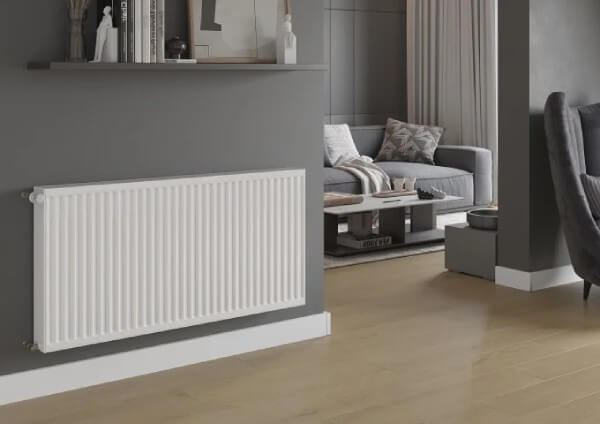
Modern technologies supporting energy efficiency
Every year, technology in the field of heating is undergoing greater innovation, allowing for increased efficiency of modern heating systems and reducing their environmental impact. Automation, intelligent management methods, and innovative insulating materials are what make our homes more energy-efficient.
Intelligent heating management systems
Modern heating management systems allow full temperature control in the home, even remotely. Through smartphone applications, homeowners can adjust the heating level to their needs in real-time, and even schedule heating for the whole week. This type of automation allows significant savings, as heating operates only when it is truly needed.
Modern insulation materials also affect home heating
Contemporary energy-efficient architecture uses advanced insulation materials that minimize heat loss. In addition to traditional materials such as mineral wool or styrofoam, insulation based on nanotechnology is gaining popularity. Such innovative materials allow a reduction in insulation thickness while maintaining high thermal properties. Undoubtedly, this affects better energy efficiency of the building.
Local conditions impact the choice of heating system
The choice of the right home heating system may depend not only on the cost of installation or usage but also on local conditions such as availability of resources or restrictions imposed by regulations. In some regions, especially where there is dense development, there may be rules limiting the use of systems that emit high levels of pollution, such as coal stoves. In turn, in rural areas, where access to pipeline gas is often difficult, solutions based on solid fuels, such as wood or pellets, are effective.
Additionally, the local spatial development plan plays a significant role. It may impose specific requirements for heating systems in newly constructed buildings, especially in protected areas or where ecological solutions are promoted. Considering these factors is important to choose the best heating for you.
Now you know what type of home heating to choose!
The choice of heating system should be well thought out and tailored to individual needs and building conditions. Each of the discussed systems – from gas heating, electric heating to heat pumps – has its advantages and disadvantages, which should be seriously considered. The final choice depends on the availability of resources, operating costs, and expectations regarding thermal comfort and environmental protection.
Now you know the diverse options for heating a home, making it easier for you to make the right decision. Remember to consult a specialist to ensure that the chosen solution will be most effective for you and your family.


